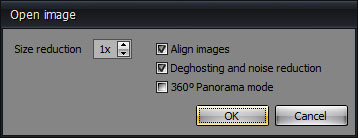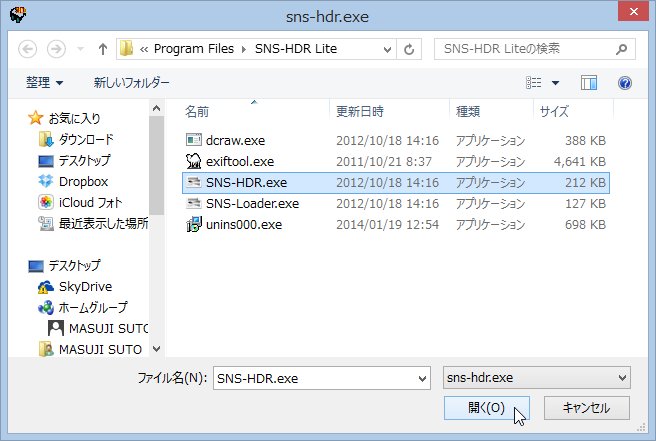
- #Sns hdr lite tutorial install#
- #Sns hdr lite tutorial update#
- #Sns hdr lite tutorial manual#
- #Sns hdr lite tutorial full#
- #Sns hdr lite tutorial software#
To use an external DynamoDB table with an application running in Elastic Beanstalk, first create a table in DynamoDB.
#Sns hdr lite tutorial update#
For a production environment, you should create the DynamoDB table outside of your environment to avoid losing it when you terminate theĮnvironment or update its configuration. This lets you create a new environment and test the functionality immediately, but has the drawback of tying the DynamoDB table to theĮnvironment. The sample application includes configuration files that create the DynamoDB table, Amazon SNS topic, and Amazon SQS queue usedīy the application. Submitting the form sends a POST request with the form data to the /signup route, which writes anĮntry to the DynamoDB table and publishes a message to the Amazon SNS topic to notify the owner of the signup. The root path ( /) returns a webpage rendered from an Embedded JavaScript (EJS) template with a form that the user fills out to The name starts with awseb and containsĬhoose the topic to view its subscriptions. Open the Topics page in the Amazon SNS console.įind the topic that the application created. When you terminate your environment, Elastic Beanstalk terminates all of the resources that it contains. In a template that you can view in the AWS CloudFormationĭomain name – A domain name that routes to yourĮlastic Beanstalk manages all of these resources. Resources in your environment and propagate configuration changes. When an alarm is triggered, your Auto Scaling group scales up or down in response.ĪWS CloudFormation stack – Elastic Beanstalk uses AWS CloudFormation to launch the

Triggered if the load is too high or too low. By default, traffic isn't allowed on other ports.Īuto Scaling group – An Auto Scaling group configured to replaceĪn instance if it is terminated or becomes unavailable.Īmazon S3 bucket – A storage location for your sourceĬode, logs, and other artifacts that are created when you use Elastic Beanstalk.Īmazon CloudWatch alarms – Two CloudWatch alarms that monitor the load on the instances in your environment and that are

Resource lets HTTP traffic from the internet reach the load balancer. Load balancer security group – An Amazon EC2 security group configured to allow inbound traffic on port 80. A load balancer also eliminates the need to expose your instances directly to the internet. Load balancer – An Elastic Load Balancing load balancer configured to distribute requests to the instances running yourĪpplication. By default, traffic isn't allowed on other ports. Resource lets HTTP traffic from the load balancer reach the EC2 instance running your web app. Instance security group – An Amazon EC2 security group configured to allow inbound traffic on port 80. Sudo sed command in the article if you prefer to manually modify the system in place.
#Sns hdr lite tutorial install#
Since Elastic Beanstalk provides AMIs with locked GUIDs, we recommend that you use the sudo yum install command in the article.
#Sns hdr lite tutorial manual#
You can also apply the manual workarounds described in this For more information, see the platform update release notes in the

To receive these updates and address this issue turn on Managed Updates or update your platforms manually. On OctoElastic Beanstalk released new platform versions for Amazon Linux AMI and Amazon Linux 2 with the updated CAĬertificates. Due to this, Beanstalk environments running on the Amazon Linux 2 and Amazon Linux AMI operating systems might not be able to connect to servers using Operating System - Windows 7 64-bit or later.The Let's Encrypt cross-signed DST Root CA X3 certificate expired on September 30,Ģ021. Procesor - Intel Core i5 or AMD Phenom II X4. Operating System - Windows Vista 64-bit. Procesor - Intel Pentium 4 or AMD Athlon 64. Saving images in JPEG and TIFF formats. Reading RAW, Radiance HDR and OpenEXR images. SNS-HDR is available in 3 versions (Professional, Home and Lite), which have different licenses and offer different sets of features.
#Sns hdr lite tutorial software#
Featuring a wide array of tools, the software has been optimized to make the generated images look natural. It allows users to create HDR images from sequences of photos, as well as process single images. SNS-HDR is a software for processing images using the HDR technique. It consists in capturing several images of the same scene at different levels of exposure and subsequently combining them into one complete image.
#Sns hdr lite tutorial full#
In order to capture the full range of luminosity of such scenes, the HDR technique is used.

As a result, the image will contain underexposed or overexposed areas, which cannot be adequately corrected at the editing stage. When the scene being photographed has both very dark and very bright areas, the camera is unable to capture its entire range of luminosity. The HDR technique makes it possible to create an image so faithfully to how the scene is perceived in reality. Windows 圆4 | Languages: Multilingual | File size: 19.7 MB


 0 kommentar(er)
0 kommentar(er)
